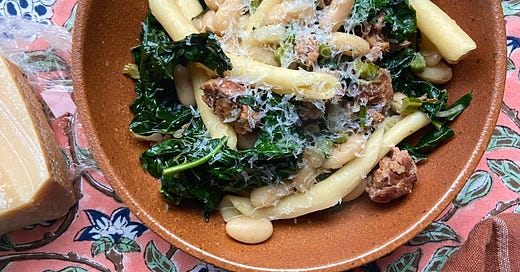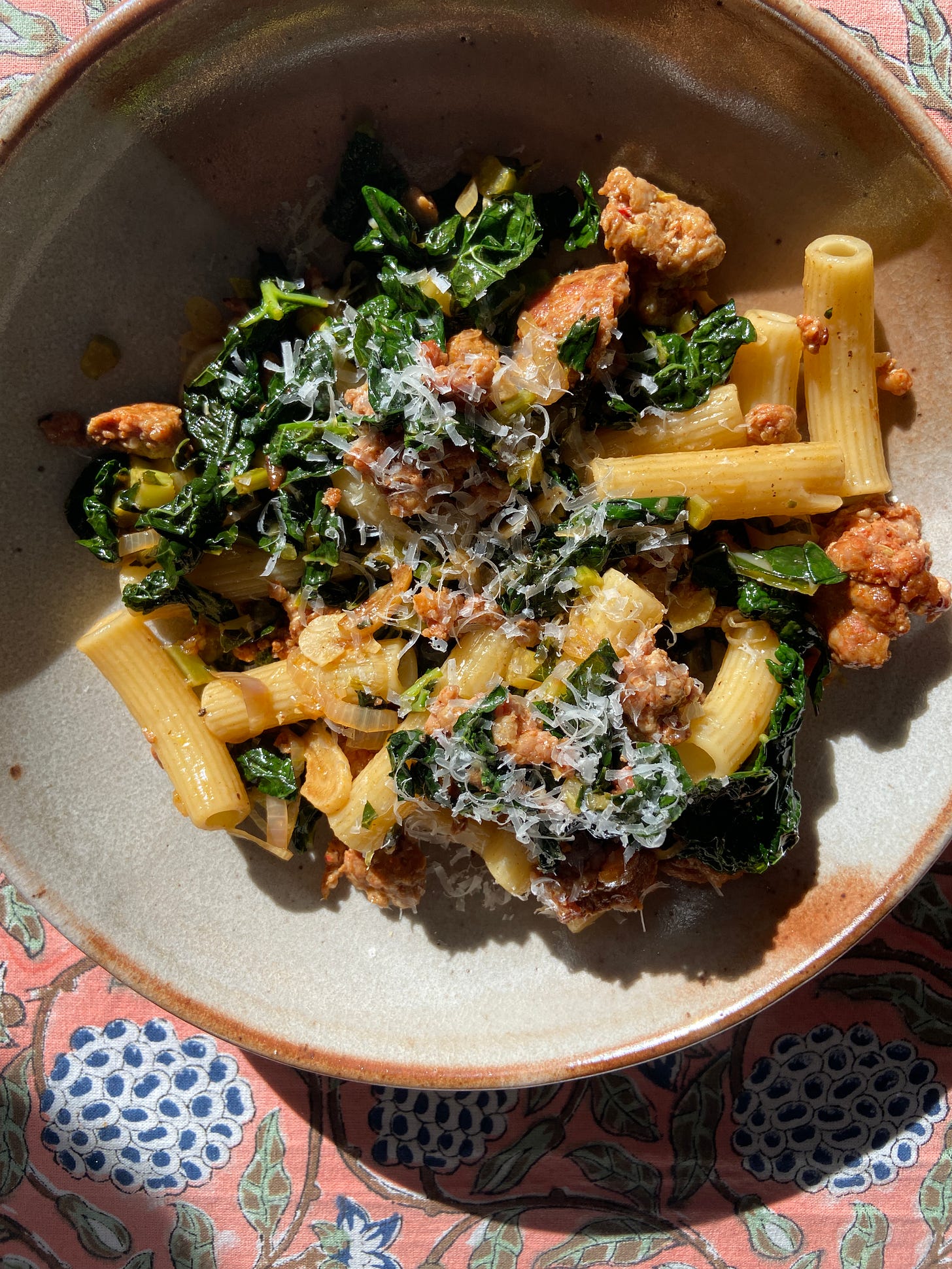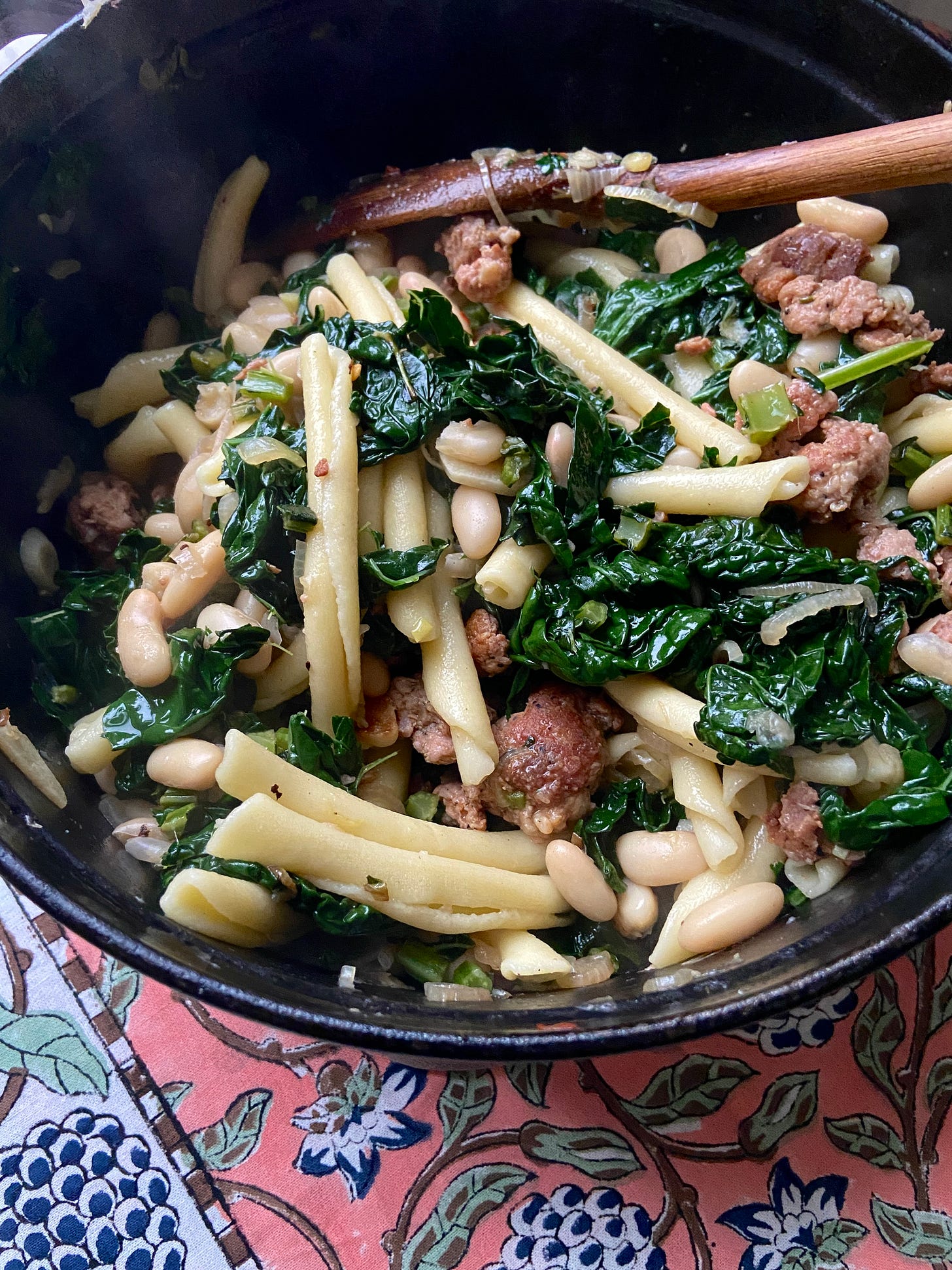"Your recipes are creative, delicious & nutritious — totally worth every penny." — Joyce, a paid subscriber
It was a bummer to realize I was sick of my favorite food. Which is pasta, of course.
Pasta makes everybody happy: the cook (me), the dishwasher (my partner), and the eaters (us). Thank goodness there’s something that’s always an option. Until it wasn’t.
I mean, I loved it as I was eating it. The bounce and chew, the slurps and twirls. But then after, I wish my body didn’t feel so groggy. Regretting pasta for dinner made me sad. I didn’t want to lose my favorite food and needed to figure out how to preserve my love for it.
There are so many traps in language when we start talking about food’s impact on bodies. We’re so far from the original meanings of words like diet (“a way of life”) and health (“wholeness”) that finding the right words makes this hard. I’m proceeding nervously but proceeding nonetheless in case something similar has been bubbling up for you.
First, I figured starch or gluten might be the issue, but then I had a bunch of cooked grains in the house from this story and realized that wasn’t the case. They were fun and easy to eat, and many even bounced like pasta. The difference between whole grains and pasta, though, is that the grains have more going on — all their flavor, fiber, and nutrients are still there for us.
This helped me realize that the path forward didn’t subtract any ingredients but rather added a variety of ingredients to my meals for more flavors, textures, nutrients, and vitamins.
Those ingredients, by the way, are plants. Produce, whole grains, and plant-based proteins like legumes, nuts, and seeds are what’s recommended by Harvard, doctors and others who really study this stuff. It’s what my body likes right now, but that could always change.
Andrea Nguyen said it so well in Ever-Green Vietnamese: “I realized that I didn’t have to give up foods that I love, but rather needed to better respect and cultivate the exciting flavors, textures, and colors in plants.”
This sounds great, but what does it look like in the day-to-day? I decide what I feel like eating, then figure out an easy-enough way to squish more plants into the equation. If it doesn’t work that night, fine — none of this can take much additional effort because we live in reality.
What feels good to eat depends on the person, day, even hour. I’m just looking for simple switches that make my food feed me better. There isn’t a list of ins and outs, and I’m not going to not eat certain foods. Speaking of: treat break! This gentle effort is like health in soft focus.
If you like the idea of soft health, hit the ❤️ button at the top left or bottom left of this newsletter.
Now back to the pasta. The many meat pasta recipes I’ve developed roughly follow this ratio for four people:
1 pound of pasta
1 pound of meat
Green vegetable (optional)
Sauce: tomato, butter, cheese, cream, or some combination.
My new formula is below. It’s not a whole-grain pasta but it is behind a paywall because recipes are not free to produce. They require thought, testing, cross-testing, ingredients, and time to be delicious and replicable in most any kitchen.
But but but is this new pasta any good? Will it still satisfy the pasta craving? For me, yes. (If it wasn’t delicious, it wouldn’t be happening.) I find the pasta less boring to eat because there’s more going on, without much more effort to make it. Ryan hasn’t noticed the change and the mmmms at the table haven’t quieted. I also gave leftovers to my friend Kate, who seemed pretty okay with new pasta.







